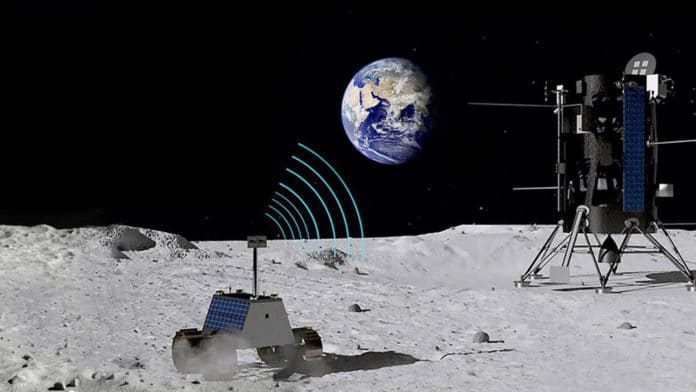NASA has announced that it has awarded Nokia’s Bell Lab a contract of $14.1 million to build the first-ever cellular network on the Moon – advancing “Tipping Point” technologies for the Moon. The system could support communications from the lunar surface carried out over long distances. It could also do it at high speed, in addition to providing highly reliable quality of communications than the standards currently in use.
It will thus help pave the way towards a sustainable human presence on the lunar surface, an essential part of NASA’s Artemis program. In total, 14 companies were selected, with contracts totaling the US $370 million. Among the initiatives that will be developed are cryogenic fluid management, landing systems, fuel cells for energy production and storage, and oxygen extraction from the lunar regolith (rocks), among others.
The groundbreaking innovation of Nokia Bell Labs will be used to build and deploy the first ultra-compact, low-power, space-hardened, end-to-end LTE solution on the lunar surface in late 2022. Nokia is partnering with Intuitive Machines on this mission, which involves integrating Nokia’s 4G space network into the Intuitive Machines lander to bring it to the lunar surface. The network will automatically configure itself upon deployment and establish the first LTE communications system on the Moon.
With the implementation of the cellular network, Nokia and NASA want to cover the wireless communication capabilities for a variety of applications requiring data transmission, including vital command and control functions, remote control of lunar rovers, real-time navigation, and high-definition video streaming. These communication applications are all vital to the long-term human presence on the lunar surface.
Also, it is able to withstand the extreme temperatures of the lunar surface, as well as the radiation and vacuum conditions that exist in space. Bell Labs will upgrade the network to 5G in the future, though it didn’t give a timescale for the project or for the launch of this lunar communications network. However, it should not take many years to be ready since the project is a part of NASA‘a plans to establish a human presence on the Moon by 2030.
The Artemis program aims to take astronauts back to the Moon in 2024 and establish a continuous presence on the lunar surface by the end of this decade. Several companies participate in the program, including SpaceX and Blue Origin, which are developing technologies for the landing vehicle that will take astronauts from orbit to the lunar surface.
